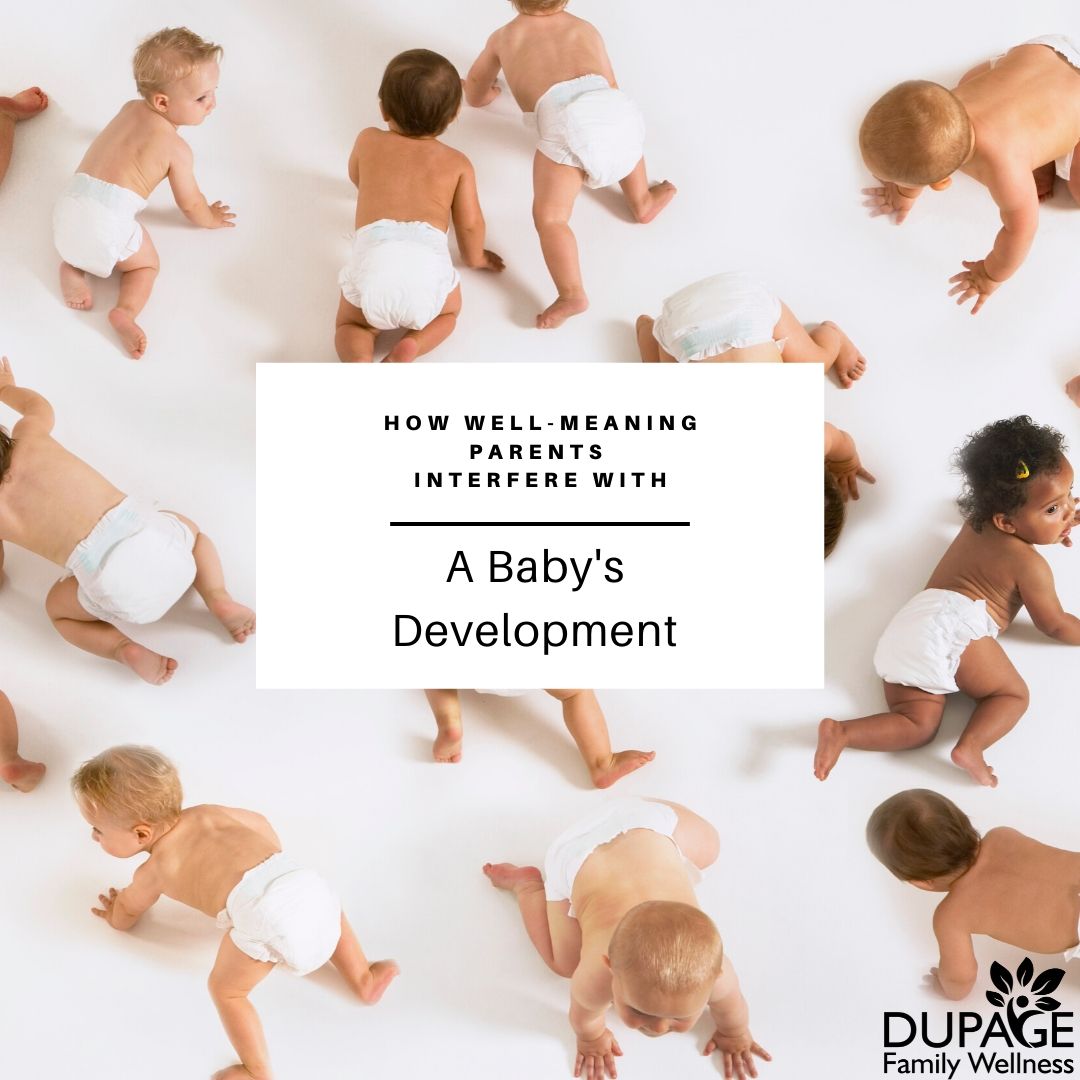 Most new parents take great joy in their baby’s accomplishments. Each new milestone is marked with joy and excitement - baby’s first smile, first words, first steps. While it’s great to celebrate these achievements, it is important to allow your baby to develop at their own pace without interference.
Most new parents take great joy in their baby’s accomplishments. Each new milestone is marked with joy and excitement - baby’s first smile, first words, first steps. While it’s great to celebrate these achievements, it is important to allow your baby to develop at their own pace without interference.
Often well-intentioned parents try to encourage their babies to reach these milestones before they are ready or put their babies in positions prematurely. This can interfere with the child’s natural development and is actually counterproductive to their learning. While some parents are competitive with their child’s development, most parents simply are not consciously aware of what they are doing.
Let’s take a look at a baby’s natural development and some of the ways we tend to undermine it!
Natural Development
Babies learn to move best by simply having the opportunity to move on their own. While they need plenty of time in mama’s lap (and daddy’s, grandma’s, grandpa’s, etc.), they also need plenty of time to explore movement in a safe environment on their own. You can still interact and be with them during these times, but they should have autonomy over their body.
According to Lindsay Mumma DC, “Children need to get a sense of how their bodies function in a gravity environment. This helps them coordinate and activate muscles in the proper sequence to initiate complex movements.” We can not do this for the baby, it simply takes time!
Babies will not learn how to do movements properly if we interfere in this process. Babies simply must learn these movements on their own to develop properly and learn to move in the most efficient manner.
Interference
Most of the ways we interfere with the natural development of movement in our babies are so normal in our society that parents rarely think about them. The intent of this article is to inform parents about this little known issue.
When you have the knowledge, you can make a conscious choice, rather than simply following society's norms. You may choose to use some of these products as tools some of the time, but it may not be your default practice. Each situation is unique, and what might work for one family may not work for another. There is no judgment for parents who do (or have done) these things.
Teaching
Many parents try to teach their children how to roll over, sit up, or walk. This actually interferes with proper development. Allowing the child to learn on their own will allow them to strengthen the proper muscles needed for the movement, providing a solid foundation for movement and creating more healthy patterns of movement that will stay with the child throughout their lives.
Using Baby Equipment
Putting a baby in a position that his body can’t achieve or maintain on their own, places undue stress on the baby’s musculoskeletal system.
• Bumbo seats - if your baby isn’t able to sit up on their own, they aren’t ready to be in this position for any length of time.
• Swings - being strapped into a reclined position for significant periods of time prevents the natural movements needed to develop the infant's core strength.
• Exosaucers - these devices tend to put the baby in a bad position for their posture and interfere with their development of balance. It also encourages babies to lock their knees and stand on their tiptoes.
• Jumpers - children's knees are still forming at this age, in fact, their kneecaps do not ossify until they are between three and five years old. It seems unwise to encourage repetitive bouncing on these knees even in a supportive device.
• Walkers/Push Carts - walkers teach babies to use awful biomechanics and delay their ability to walk independently. Push toys may be fun for little ones, but should only be used with children that are walking well independently.
Parental Assistance
Parents often try to teach their baby how to roll over, sit up, or walk.
• Placing the baby in a sitting position
• Supporting the baby in a standing position
• Holding the baby's hands to help him walk, etc.
While parents intend to encourage and help, this enthusiasm actually prevents the child’s development. When a child is allowed to develop without interference they will have a stronger foundation for healthy movement throughout their lives.
But Never!?!
There are many reasons why parents like these devices, so I understand that this is a difficult topic. While creating a safe spot for the baby to play and explore natural movement is ideal, not all situations allow for this. The key is to know the benefits and risks involved so that you can make the right decision for your family. If you decide to use some of these products on occasion don’t feel bad, just be sure to balance it out with lots of free, baby-directed movement!
We absolutely want to encourage our children’s development! It can be tricky to come alongside our children's natural development in a non-intrusive way. By allowing them to grow naturally at their own pace, they tend to build a solid foundation of strength and overall stability.
If you'd like to learn more on this topic, here are two great articles from the Pathways to Family Wellness Magazine put out by the International Chiropractic Pediatric Association (here and here.) The second article has some great picture examples of helpful and harmful positions for development.
I’d be glad to talk with you about ways to encourage natural movement for both you and your children. And of course, if you have any concerns about your child’s development please talk with me or your child’s pediatrician.
Dr. Jamie
